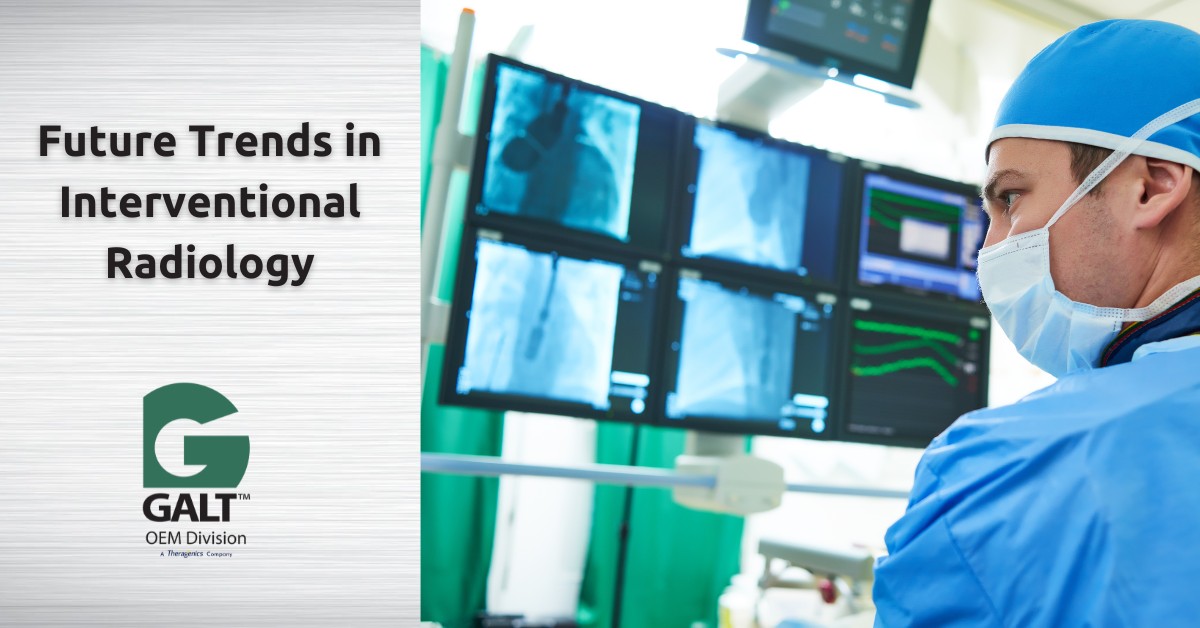Future Trends in Interventional Radiology

Interventional radiology (IR) is a field of healthcare that constantly moves forward as innovative new technologies are introduced and the capabilities of clinicians become more widespread and advanced. Percutaneous electrochemotherapy, injectable intra-tumoral therapy, percutaneous thermal ablation, and mechanical thrombectomy are just some of the areas where new innovations are being developed.
In this blog, we are going to look at future trends in interventional radiology with a focus on those that have the potential for transformative change for healthcare providers, clinicians, and, of course, patients.
Artificial Intelligence
Artificial intelligence (AI) is a hot topic across a range of industries and sectors, including healthcare. In fact, AI is already transforming healthcare in multiple fields and specialties.
AI technologies will also have an impact on interventional radiology, although the dynamic nature of IR procedures does present some challenges. That said, the increasing use of AI in interventional radiology is a growing trend.
For example, AI can give clinicians meaningful, real-time insights from the wide-ranging and complex data that is available during an IR procedure. AI also has the potential to assist in the guidance of devices through complex anatomies, among other applications.
Augmented Reality and Mixed Reality
Augmented reality and mixed reality are technologies that fall into the same category as virtual reality:
- Virtual reality (VR) – where you enter a completely simulated, virtual world.
- Augmented reality (AR) – where the real world is overlaid with digital data, graphics, and information.
- Mixed reality (MR) – where digital overlays interact with the real world, such as a virtual ball bouncing off a real-world wall.
Augmented reality and mixed reality technologies are set to become increasingly important in interventional radiology. For example, AR technologies can make it possible for clinicians to see images without having to turn their heads away from the patient to look at a screen. AR could also present information directly into the clinician’s field of vision, such as patient vital signs.
Augmented or mixed reality technologies could also display anatomies in a more realistic way by, for example, layering previously generated ultrasound or CT scan images to give the clinician a clearer visualization of the patient’s anatomy. This could be a fusion of 3D anatomy images with 2D fluoroscopic images with the potential to help with specific tasks during a procedure, such as needle placement or when navigating complex vasculatures.
AR and MR technologies can also enable and enhance collaboration during complex procedures where a clinician can confer and consult with colleagues in different locations, with those colleagues seeing (through an AR or MR headset) exactly what the clinician is seeing.
Other applications for these technologies include:
- Teaching and training – where clinicians can practice interventional radiology procedural skills in a realistic and safe simulated environment.
- Simulations – enabling clinicians to simulate aspects of procedures before performing them on the patient, particularly where there are unique, patient-specific risks and challenges.
Radiogenomics
Radiogenomics combines medical imaging and molecular pathology to better utilize the often-untapped data that exists in medical imaging. Some of the potential benefits of radiogenomics include reducing unnecessary procedures by, for example, using imaging data to diagnose conditions rather than taking a tissue sample. Radiogenomics can also be used to determine the best treatment option for patients, particularly oncology patients.
Robotics
The use of robotics is another trend in interventional radiology that is expected to continue growing over the coming years and decades. Robotics technologies are particularly beneficial when combined with other technologies and trends on this list, including AI, AR, and/or MR.
For example, robotic navigation systems could help improve surgical accuracy. Robotics can also be used during radiographic procedures, so clinicians are not exposed to radiation and don’t have to wear heavy and uncomfortable protective aprons. They can instead work in a different room.
Demographic Changes
Demographic changes are also a relevant trend, especially when you consider the fact that populations in Europe and the US are getting older. Interventional radiology treatments have been increasingly used as technologies have advanced and new medical devices have become available. This trend is set to accelerate as the number of older people in society increases.
Expanding Applications for IR
There are an increasing number of conditions that can be treated with interventional radiology procedures. Some examples include managing chronic arthritis pain and treatments for obesity that reduce appetite. In these and other examples, interventional radiology procedures can replace medication therapies and invasive surgeries where there are clear benefits, particularly in relation to cost and patient outcomes.
Improving Patient Outcomes
Other trends that apply to interventional radiology include the increasing use of sensors in minimally invasive medical devices, technologies that reach the most complex and tortuous anatomies in the body, and advances in material science that enable the development of smaller and smaller vascular access, treatment, and diagnostic devices.
With all trends in interventional radiology and healthcare in general, the focus should always remain on improving patient outcomes.
